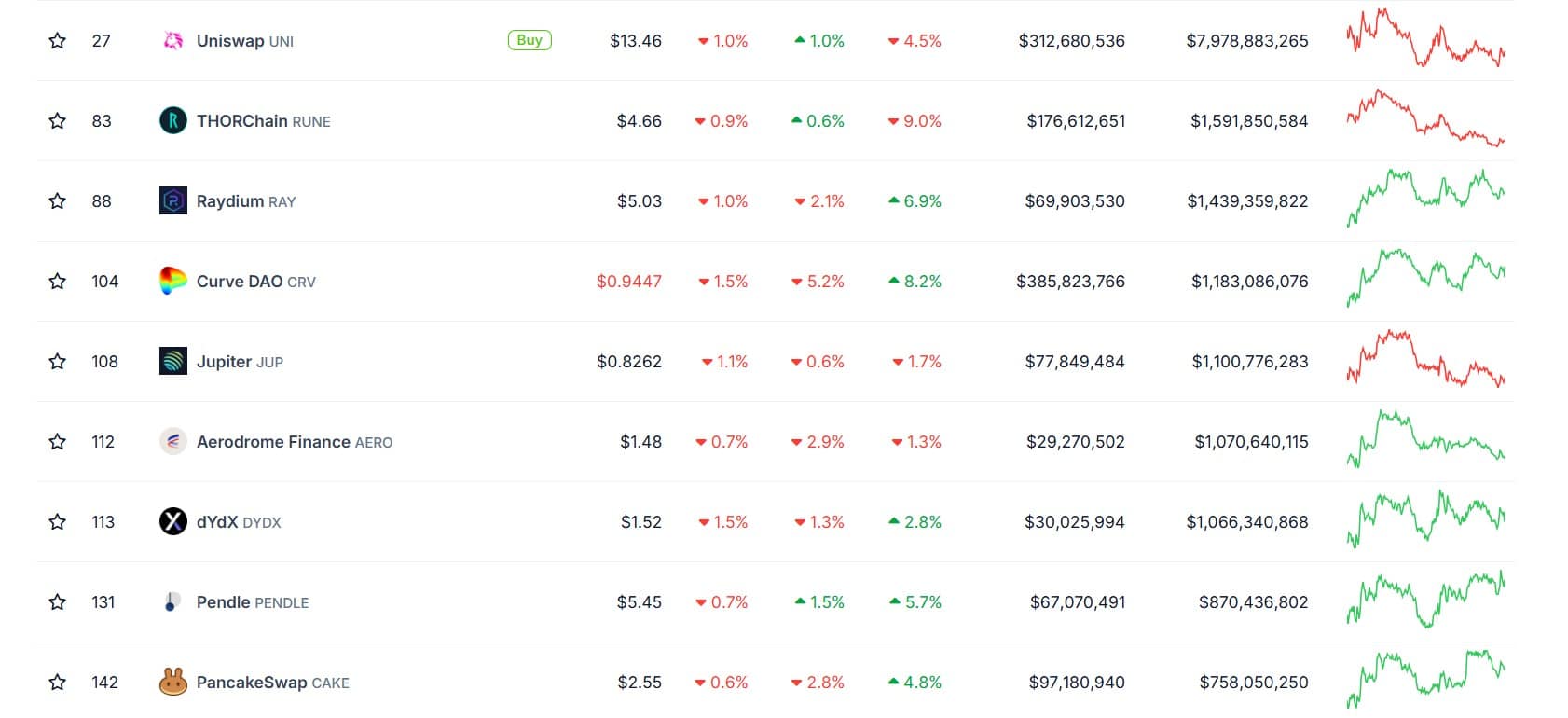Physical Address
304 North Cardinal St.
Dorchester Center, MA 02124
Physical Address
304 North Cardinal St.
Dorchester Center, MA 02124

The recent rise of Aerodrome Finance, leaving PancakeSwap behind, could herald an important moment of transformation in the field of decentralized finance (DeFi).
This change showcases Aerodrome’s innovative strategies in Layer-2 ecosystems and positions it as a new influential player in a rapidly evolving market.
“We are thrilled that the community has embraced our DeFi vision,” said an Airport official. He highlighted his efforts aimed at sustainable growth.
This article examines why Aerodrome Finance surpassing PancakeSwap is a significant milestone and how it could shape the DeFi dynamic.
PancakeSwap has long maintained its position as the leading decentralized exchange (DEX) on the BNB chain. Therefore, the rise of Aerodrom reflects the changing dynamics in the DeFi space. With a market cap of $1.07 billion compared to PancakeSwap’s market cap of $758 million, Airport’s growth has been accelerated by high adoption rates, improved liquidity incentives, and integration with second-tier ecosystems.

Source: CoinGecko
This jump highlights the Airport’s ability to attract liquidity and maintain user engagement, while tokenomics Leverage structures and efficient fee structures. On the other hand, PancakeSwap’s connection to its established user base is facing pressure to evolve as competition increases. This signals a wider transformation; This is where the importance of customization increases.
Additionally, with a Total Value Lock (TVL) of $1.398 billion on one chain, Aerodrome shows more focused efficiency compared to PancakeSwap’s $1.906 billion spread across nine chains. However, it lags behind in daily income and wages; Although it generated $698K in revenue, that matches PancakeSwap’s revenue of $4.35M. This situation makes a difference in terms of transaction volume and ecosystem maturity. difference reveals that it is.

Source: DefiLlama
PancakeSwap’s multi-chain strategy maintains a broader scope of liquidity, while Aerodrome’s heavy dominance in the Layer-2 niche demonstrates strategic depth. Namely, Aerodrom’s smaller operational scope brings lower annual revenue of USD 5.9 million compared to PancakeSwap’s USD 6.14 million. The data suggests Aerodrome’s scalability has yet to be tested, but its rapid rise points to potential disruption if momentum continues.
While Aerodrome Finance’s move to PancakeSwap demonstrates its disruptive potential, Uniswap remains a significant competitor. With a market cap of $7.98 billion and a daily transaction volume of $312.6 million, Uniswap stands out for its multi-chain approach and institutional adoption. On the other hand, the Airport’s market value of 1.07 billion dollars and daily turnover of 29.2 million dollars indicate that it is a relatively young project.
Although it stands out for its Layer-2 integration and innovative tokenomics, it is crucial for Aerodrome to expand beyond its dense niche. Uniswap’s recent moves—expanding Layer-2 operations to Optimism and Arbitrum and integrating advanced MEV resilience technologies—consolidate its market position. Therefore, the platform must increase the volume of transactions, expand its ecosystem and attract institutional investment.
Read the Aerodrome Finance (AERO) price forecast 2025-2026.
For now, Aerodrome signals a shift in the DeFi space, but it seems unlikely that it will challenge Uniswap’s dominance in the short term. The gap is huge and may require a radical leap in adoption, technology and liquidity to close it.
In short, Aerodrome Finance passing PancakeSwap reveals that the dynamics in the DeFi ecosystem have changed. While the possibility of challenging giants like Uniswap is slim, Aerodrome’s focus on innovation and user engagement could pave the way for it to gain more prominence in the evolving DeFi landscape.